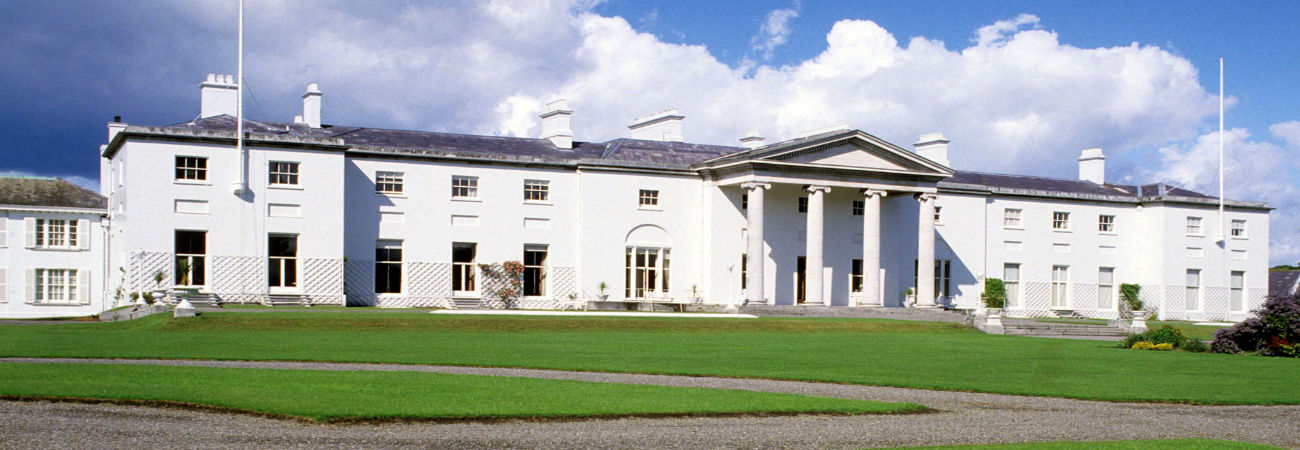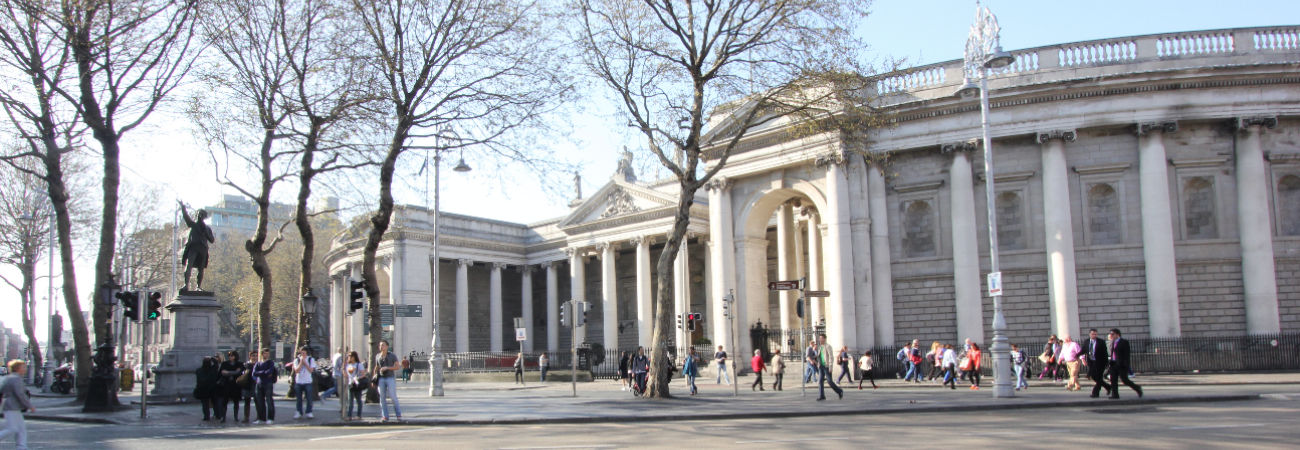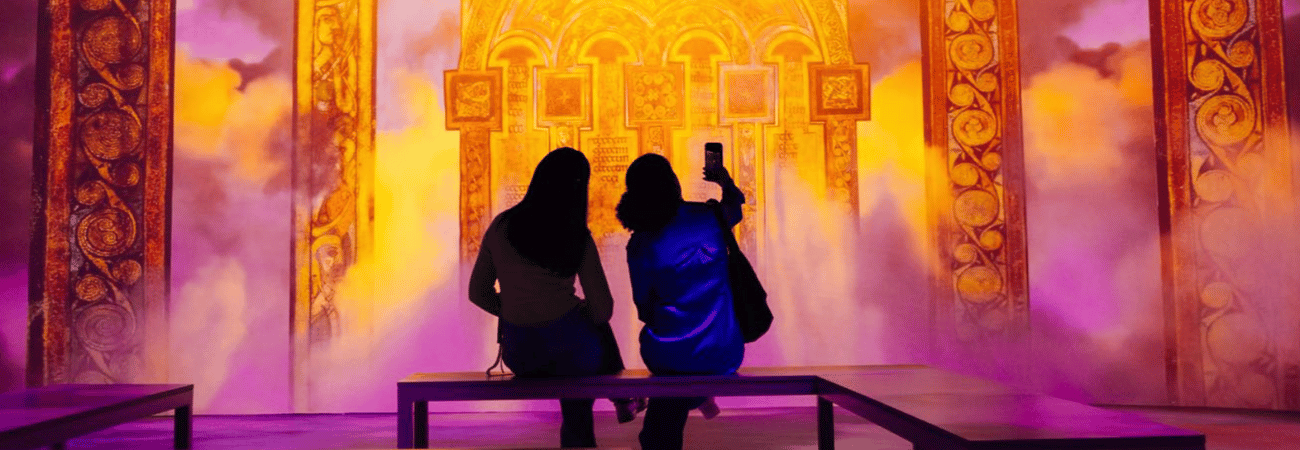Dublin statues are a significant feature of the cityscape of Dublin; statues can tell you a lot about the city, about its attitudes, its history, its famous sons and daughters. Dublin is blessed by a multitude of statues and monuments, from the abstract to the life-like. Here are some of the most famous that you might want to seek out. All are in public spaces and within easy reach of the city centre, so go exploring!
The Children Of Lir
The Children of Lir is an Irish legend which we have summerised below.
The King of Lir had four children, one girl, Fionnuala, and three sons, Aodh and twins, Fiachra and Conn. Their mother Aoibh died and the children missed their mother terribly and so the king married Aoife his wife’s sister but Aoife grew jealo......us of the children's love for each other and their father so she plotted to get rid of them. On a journey with the children, she ordered her servant to kill them but the servant refused. In anger, she tried to do it herself, but did not have the courage. Instead, she used her magic to turn the children into swans. As swans, the children had to spend 300 years on Lough Derravaragh, 300 years in the Sea of Moyle, and 300 years on the waters of Irrus Domnann Erris. - The story of how the Children of Lir were eventually released from the spell varies but all with the same conclusion - After their release, being 900 years old, they immediately turned into old withered people and died. ascending to heaven to live happily with their mother and father.
The statue of the Children of Lir resides in the Garden of Remembrance, Parnell Square in Dublin, Ireland.( opposite the Castle Hotel) It symbolises the rebirth of the Irish nation following 900 years of struggle for independence much as the swans were "reborn" following 900 years.
Famine memorial
Just past Custom House is a very moving and beautifully sculptured group of bronze statues designed by Dublin’s local artist, Rowan Gillespie. The memorial, which was commissioned by Norma Smurfit to commemorate the 150th anniversary of the famine was presented to the City of Dublin in 1997. It consists of 7 statues that depict Irish famine immigrants looking out towards the sea, awaiting their departure on famine ships to take them to a new life.
The Famine between 1845 and 1852 took more than 1 million Irish people’s lives and caused another million more to emigrate (mostly to America).The location of the sculpture on Custom House Quay is particularly appropriate and historic as one of the first ships to set sail during Famine period was the 'Perserverance' which left the Quay on St. Patrick's Day 1846.
Brendan Behan
Brendan Francis Behan (9 February 1923 – 20 March 1964) was an Irish poet, short story writer, novelist, and playwright who wrote in both Irish and English.
In 1954 Behan's play The Quare Fellow was well received in the tiny Pike Theatre However, it was the 1956 production at Joan Littlewood's Theatre Royal in Stratfo...rd, East London, ...that brought Behan a wider reputation. Behan's second play, An Giall (1958), was commissioned by Gael Linn, the Irish-language organisation. Behan translated the play into English and it was Joan Littlewood's production of The Hostage (1958) which led to success in London and New York. Behan's autobiographical Borstal Boy also appeared in 1958, and its early chapters on prison life are among his best work.
The Brendan Behan statue is located on the banks of the Royal Canal at Dorset Street and Whitword Road.See more
James Joyce
James Augustine Aloysius Joyce (1882 – 1941) was an Irish novelist and poet, considered to be one of the most influential writers of the early 20th century. Joyce is best known for his novel, Ulysses (1922) which takes place on June 16th 1904. To this day every June 16th people gather in Dublin for “Bloomsday” t...o celebrate the life of James Joyce and relive the events in the novel. Other major works are the short-story collection Dubliners (1914), and the novels A Portrait of the Artist as a Young Man (1916) and Finnegans Wake (1939), and his complete oeuvre includes three books of poetry, a play, occasional journalism, and his published letters.
This bronze statue of James Joyce, is located on Earl Street, just off O’Connell St. It features his walking cane, large wide brimmed hat and horn rimmed glasses for which Joyce was well known.
Oscar Wilde
Irish playwright & Victorian dramatist Oscar Wilde became one of London's most popular playwrights in the early 1890s, probably best known for his play The Importance of Being Earnest and his only novel The Picture of Dorian Gray. Today he is remembered for his epigrams, plays and the circumstances of his imprisonment, followed by his early death.
This colourful statue of Oscar Wilde, reposing on a rock, is located in a corner of Merrion Square close to Ireland's National Art Gallery & Government Buildings.
Cúchulainn
Located in the General Post Office is the Statue of Irish legendary warrior Cúchulainn by famous sculputure Oliver Sheppard. This statue is of one of Ireland's greatest legendary heroes. Originally named Setanta, he received his new name when he killed the hound (or cú) owned by a local blacksmith named Cullan. The statue shows Cúchulainn in his death throes after being mortally wounded in an attack, he reputedly tied himself to rock in order to die on his feet. The statue is a commemoration to those who lost their lives in the Easter Rising of 1916
Phil Lynott
Philip "Phil" Lynott (20 August 1949 – 4 January 1986) was an Irish musician who first came to prominence as a founding member, principal songwriter, and frontman of the Irish rock band Thin Lizzy. As leader of the band, Lynott's vocals and bass guitar were a key element in the commercial success of thirteen albums, in... addition to a string of hit songs. Their first top ten hit was in 1973, with a rock version of the traditional Irish song "Whiskey in the Jar", Their biggest international hit, the 1976 song "The Boys are Back in Town", featured Lynott's lead vocals. Lynott also embarked upon a solo career, published two books of poetry, and after Thin Lizzy disbanded, he assembled and fronted the band Grand Slam, right up until his death at the age of 36.
In 2005, the life-size bronze statue of Phil Lynott was unveiled on Harry Street, off Grafton Street in Dublin. The ceremony was attended by former band members and by Lynott's mother.
Patrick Kavanagh
Born in Iniskeen, Co. Monaghan in 1904, Patrick Kavanagh moved to Dublin in 1939 to work as a freelance writer, Amongst his works are the autobiographical, Tarry Flynn published in 1936, The Great Hunger, Lough Derg, & Raglan Road (The musical version of which is also known as the Dawning of the Day) are his most famous works.
This memorial is located on the bank of the Grand Canal Dublin near Baggot Street bridge. The bench seat is made from an Irish oak tree which was 100 years old.
Molly Malone
As well as being known and sung internationally, the popular song 'Cockles and Mussels' has become a sort of unofficial anthem of Dublin city. The song's tragic heroine Molly Malone and her barrow have come to stand as one of the most familiar symbols of the capital.
In Dublin's fair city,
...Where the girls are so pretty,
I first set my eyes on sweet Molly Malone,
As she wheeled her wheel-barrow,
Through streets broad and narrow,
Crying, "Cockles and mussels, alive, alive, oh!"
"Alive, alive, oh,
Alive, alive, oh",
Crying "Cockles and mussels, alive, alive, oh".
She was a fishmonger,
But sure 'twas no wonder,
For so were her father and mother before,
And they each wheeled their barrow,
Through streets broad and narrow,
Crying, "Cockles and mussels, alive, alive, oh!"
(chorus)
She died of a fever,
And no one could save her,
And that was the end of sweet Molly Malone.
Now her ghost wheels her barrow,
Through streets broad and narrow,
Crying, "Cockles and mussels, alive, alive, oh!"
(chorus).
Legend has it that Molly Malone was a fishmonger and a working girl who sold her 'wares' on the streets of Dublin in the 1600's.
The Molly Malone statue on Suffolk St, Dublin 2 was unveiled by then Lord Mayor of Dublin, Alderman Ben Briscoe during the 1988 Dublin Millennium celebrations, declaring June 13th as Molly Malone Day.
Anna Livia
Anna Livia is a bronze monument which was formerly located on O'Connell Street in Dublin. Designed by the sculptor Eamonn O'Doherty, the monument is a personification of the River Liffey (Abhainn na Life in Irish) which runs through the city. Anna Livia Plurabelle is the name of a character in James Joyce's Finnegan's Wake who also embodies the river. The 18ft-long bronze monument was removed from its site on O'Connell Street in 2001 to make room for the Spire of Dublin.and has spent the past decade in storage.
A new home has now been found for her in the Croppies Momorial next to the Liffey near Heuston station.


